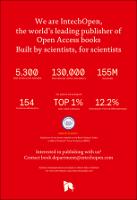Chapter Raman Fiber Laser–Based Amplification in Telecommunications
| dc.contributor.author | Tan, Mingming | |
| dc.date.accessioned | 2021-06-02T10:10:57Z | |
| dc.date.available | 2021-06-02T10:10:57Z | |
| dc.date.issued | 2018 | |
| dc.identifier | ONIX_20210602_10.5772/intechopen.73632_381 | |
| dc.identifier.uri | https://library.oapen.org/handle/20.500.12657/49267 | |
| dc.description.abstract | The chapter demonstrates a detailed study of Raman fiber laser (RFL)-based amplification techniques and their applications in long-haul/unrepeatered coherent transmission systems. RFL-based amplification techniques are investigated from signal/noise power distributions, relative intensity noise (RIN), and fiber laser mode structures. RFL-based amplification techniques can be divided into two categories according to the fiber laser generation mechanism: cavity Raman fiber laser with two fiber Bragg gratings (FBGs) and random distributed feedback (DFB) Raman fiber laser using one FBG. In addition, in cavity fiber laser–based amplification, reducing the reflectivity near the input helps mitigate the signal RIN, thanks to the reduced efficiency of the Stokes shift from the second-order pump. To evaluate the transmission performance, different RFL-based amplifiers were optimized in long-haul coherent transmission systems. Cavity fiber laser–based amplifier introduces >4.15 dB Q factor penalty, because the signal RIN is transferred from the second-order pump. However, random DFB fiber laser–based amplifier prevents the RIN transfer and therefore enables bidirectional second-order pumping, which gives the longest transmission distance up to 7915 km. In addition, using random DFB laser-based amplification achieves the distance of >350 km single mode fiber in unrepeatered DP-QPSK transmission. | |
| dc.language | English | |
| dc.subject.classification | thema EDItEUR::P Mathematics and Science::PH Physics::PHJ Optical physics::PHJL Laser physics | en_US |
| dc.subject.other | Raman amplification, Raman fiber laser, coherent transmission, random fiber laser, cavity fiber laser | |
| dc.title | Chapter Raman Fiber Laser–Based Amplification in Telecommunications | |
| dc.type | chapter | |
| oapen.identifier.doi | 10.5772/intechopen.73632 | |
| oapen.relation.isPublishedBy | 09f6769d-48ed-467d-b150-4cf2680656a1 | |
| oapen.relation.isFundedBy | f1209042-b1d5-45a6-82b3-225d50f736ca | |
| oapen.grant.number | 748767 | |
| oapen.grant.number | 608099 | |
| oapen.grant.acronym | SIMFREE | |
| oapen.grant.acronym | ICONE |

